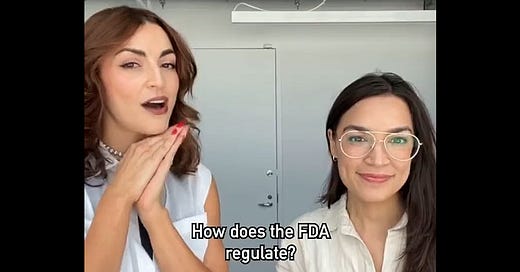AOC's blemished skincare cause
Conflicts of interests, ignored safety concerns, and neoliberal rhetoric make this look a whole lot like industry PR.
Rep. Alexandria Ocasio-Cortez has posted what looks an awful lot like a crass call for deregulation on behalf of sunscreen companies. Say what you will about the merits of her case, but the optics here are absolutely terrible — ironically, because the optics are so perfect. The shot is perfectly lit, everyone is wearing shades of white, even the walls are white. It looks like a cosmetics commercial! And in a way, it is: while AOC shakes her fist at the “regulatory barriers” that we need to “break through”, Dieux CEO Charlotte Palermino looms over her shoulder in pearls. Dieux, of course, is a skincare company that would stand to profit from getting past those pesky regulations.
It’s the conflicts of interest combined with AOC’s vague phrasing that makes this all so disturbing.
Keep reading with a 7-day free trial
Subscribe to Carl Beijer to keep reading this post and get 7 days of free access to the full post archives.





